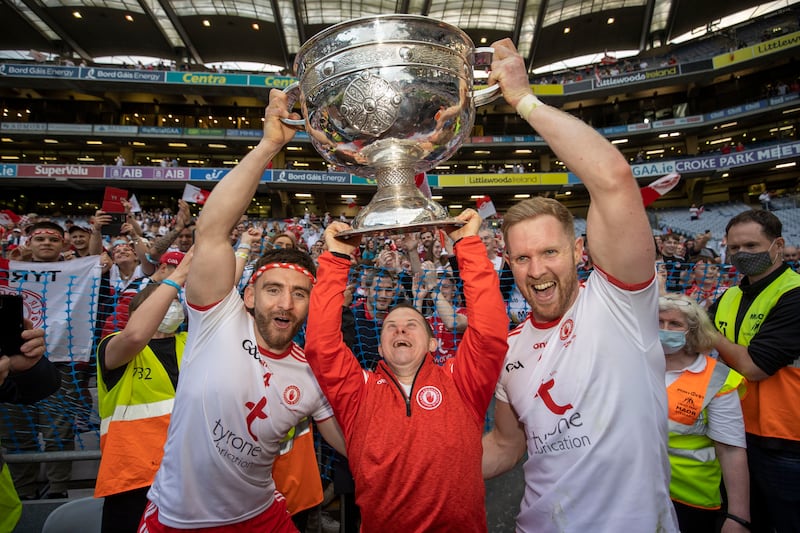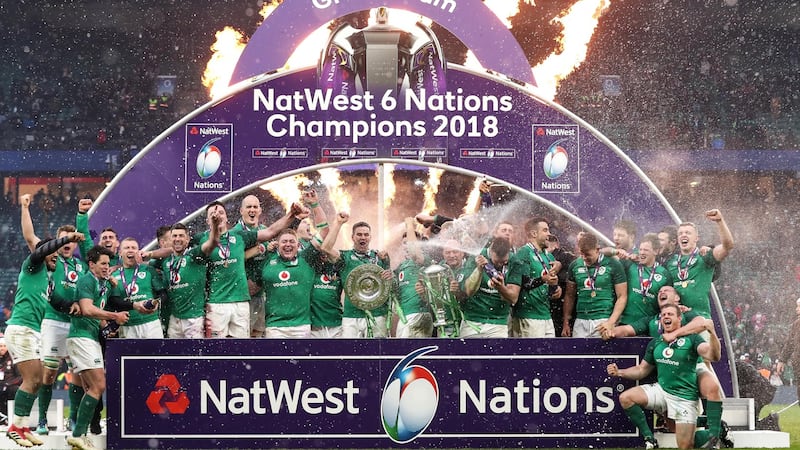Figures released last week by RTÉ brought mixed news for the GAA. Only two of their fixtures, the All-Ireland football and hurling finals, were rated in the top 10 broadcasts for 2022, one down on last year and the same as in the pandemic-enforced winter championship two seasons ago.
An improvement on last year was the fact that the hurling final between Limerick and Kilkenny came in at number four and the football climax between Kerry and Galway was the most watched programme of the year, apart from perennial ratings leader The Late Late Toy Show.
That compared with 2021 when, although the Tyrone-Mayo All-Ireland was also the most watched television programme behind the Toy Show, the GAA’s other places in the top 10 were at nine and 10, for the Limerick-Cork hurling All-Ireland and the Mayo-Dublin football semi-final.
One variable at work is the GAA’s decision to switch to the split season and the relocation of the All-Ireland finals to July last year.
In this uncharted territory, Limerick’s All-Ireland final win over Kilkenny attracted a television audience of 786,000 for the first hurling All-Ireland to be played in July and the first of any sort for more than century.
The good news was that it represented an increase on the previous year’s audience. Limerick-Cork was played in August and attracted a slightly smaller audience of 769,0000.

The football final last year between Kerry and Galway drew a smaller audience (872,000) than the 2021 equivalent played in August between Tyrone and Mayo (994,000).
What is noticeable is the extent to which live sport dominates the annual ratings. Fourteen of last year’s most watched broadcasts were sports events. It was a particularly busy year with the Fifa World Cup coverage coming at an unusually late time of year, in November and December.
More strikingly the entire top 10, apart from the Toy Show, was given over to sport. Apart from the All-Ireland finals, Ireland’s Six Nations clash with France in Paris came in at three – splitting the All-Ireland finals – and all told there were four of the rugby team’s Six Nations fixtures on that list, England at seven, Wales at nine and Scotland at 10.
World Cup winners Argentina had two matches at five and six, the final against France and the semi-final against Croatia. England’s defeat by France completed the list at eight. These matches may in fact have commanded even higher audiences as they were also available on BBC and ITV.
There has been a bit of a sea change in the past 15 years or so in the traditional pecking order of sports events.
The All-Ireland’s traditional place at the top of the sports pile came under pressure once Ireland started to qualify for international tournaments. It is accepted that these matches draw the biggest television audiences going back to Jack Charlton’s team at Euro 88 and Italia 90.
Within the GAA, there is cheerful resignation that big, competitive soccer internationals will always have a greater attraction but equally that such level of success is not a constant.
When it happens there isn’t much that can be done. Even the last time that Ireland were in such a position, at Euro 2016, the ratings reflected it. Three of the matches came in at two, three and four after the Toy Show with the All-Ireland finals at five (football), seven (football replay) and eight (hurling).
The big change in the past 15 years has been the performance of rugby as a broadcast attraction. Although to maximise ratings, Ireland need to be successful or competitive and that had originally been seen as an inhibiting factor, the fact is that Irish rugby has enjoyed a very good few years and that has been reflected in the audience.

More positive new for the GAA is that the football final has for the past four years taken top spot for sports broadcasts and you have to go back to 2018 for the last year that this didn’t happen. Top spot then went to Ireland’s Grand Slam win in Twickenham.
But it hasn’t been unusual in recent years for international events to outstrip the All-Irelands’ television ratings; in fact 2018 was the fifth year in the previous nine to have seen it happen.
Croke Park has not reported any long-term downward trend in recent years and there is an acceptance that a big international event, particularly with strong Irish involvement will always draw a big audience.
Whereas the appeal of rugby has undoubtedly arisen in the past 15 years – the 2003 Grand Slam decider against England in Dublin ranked only sixth in that year’s sports broadcasts with an average audience of just more than half a million – big ratings depend on international success, which can’t be guaranteed.
When former GAA commercial director Dermot Power retired a decade ago he was asked on RTÉ radio by Marty Morrissey about how big a threat rugby posed to Gaelic games. Power, who had a background in rugby, said that the game in Ireland was going through a golden age but realistically that couldn’t last forever.
Yet it went on to sustain its success to the point that with Ireland ranked number one in the world, good audiences for the imminent Six Nations can be expected.















